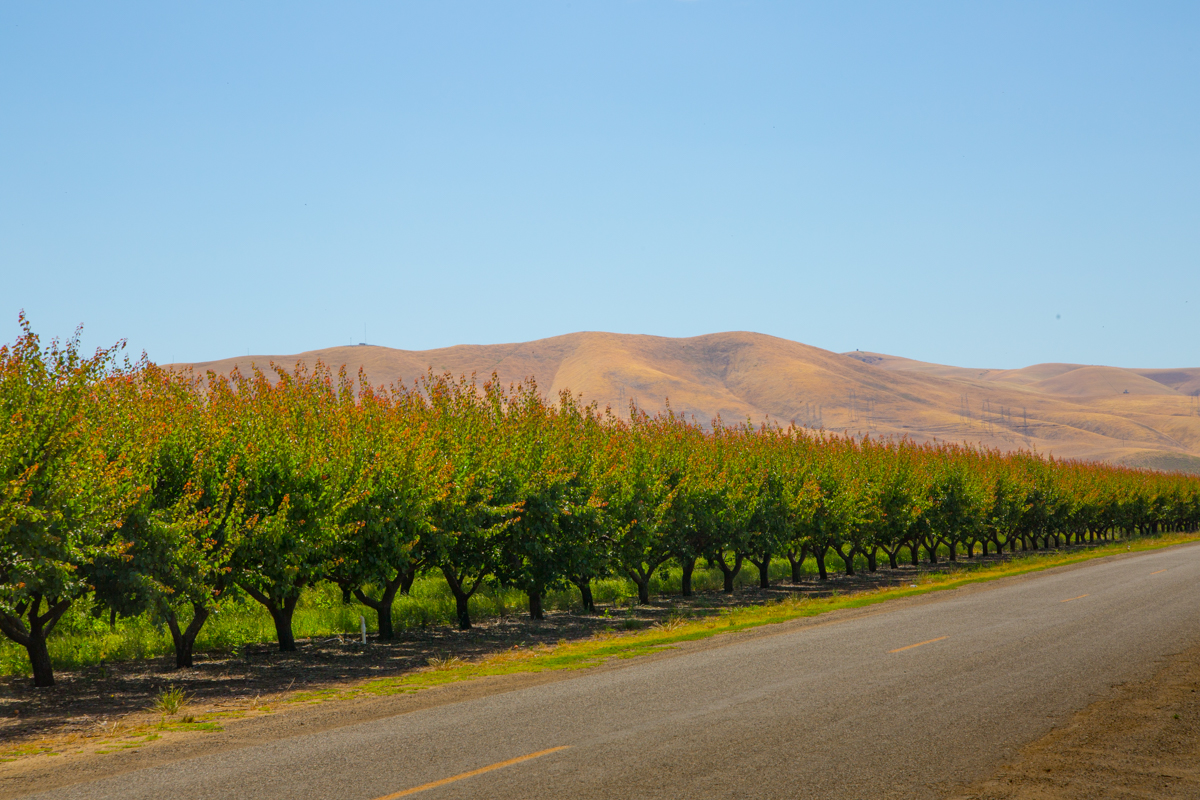
I drove over the Coastal hills in early June with some friends to experience the Apricot Fiesta in Patterson, the “Apricot Capitol of the World” and to visit George Bonacich at his Apricot ranch nearby. My first impressions of apricot orchards, Central Valley style? They are big and so are the fruit! The contrast between lush, irrigated orchards and the surrounding dry grassland hills is striking too. I felt a little like Dorothy, leaving my memories of the fertile, temperate, and forested Santa Clara Valley behind for this arid region of large scale orchard agriculture,”…we’re not in Kansas anymore!”
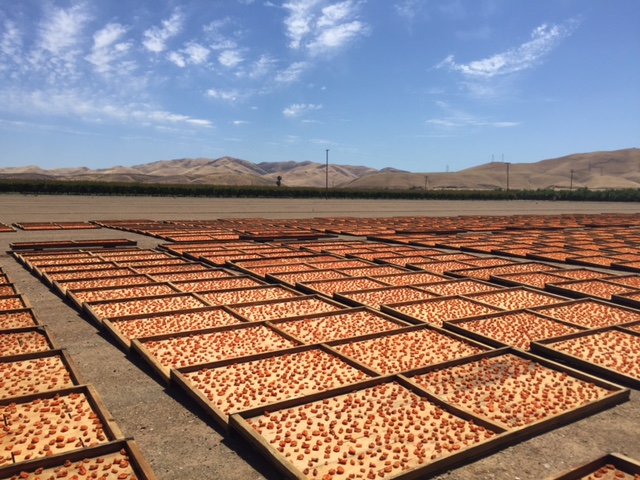
California’s Central Valley has a dramatically different climate and landscape than the Bay Area where apricot orchards were first cultivated in California. From the late 1800s through the 1960s, Santa Clara County was the “Apricot Capital of the World”, though it never boasted the title, with over 18,000 acres planted in Apricots at its peak. Renowned for its extravagant beauty as the Valley of Heart’s Delight, Santa Clara County enjoyed a unique confluence of benign climate, family farming culture and technological development. The post-war boom brought a swift end to this way of life and by the 1970s, Stanislaus County claimed title as the Apricot Capital with just 8,000 acres of apricots, due to the phenomenal pace of urbanization in the Bay Area and loss of agricultural land.
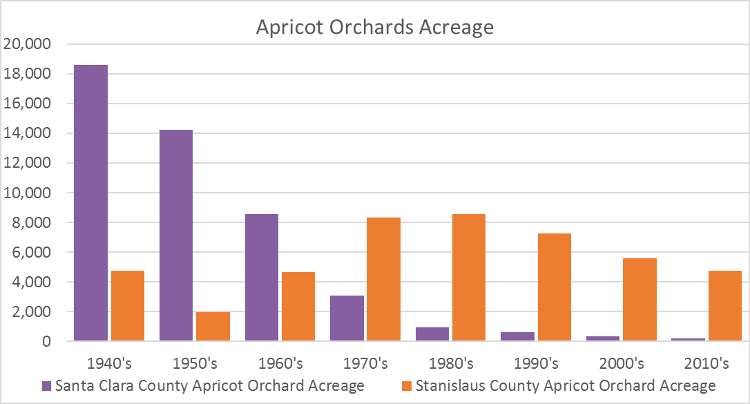
Patterson, emerged as the center for apricot farming in the great Central Valley, although apricots are grown from Lassen County in the northern Sacramento Valley to southernmost Kern County in the San Joaquin Valley. Today, the region is fighting its own battles with urban encroachment and apricot orchard acreage is on the decline.
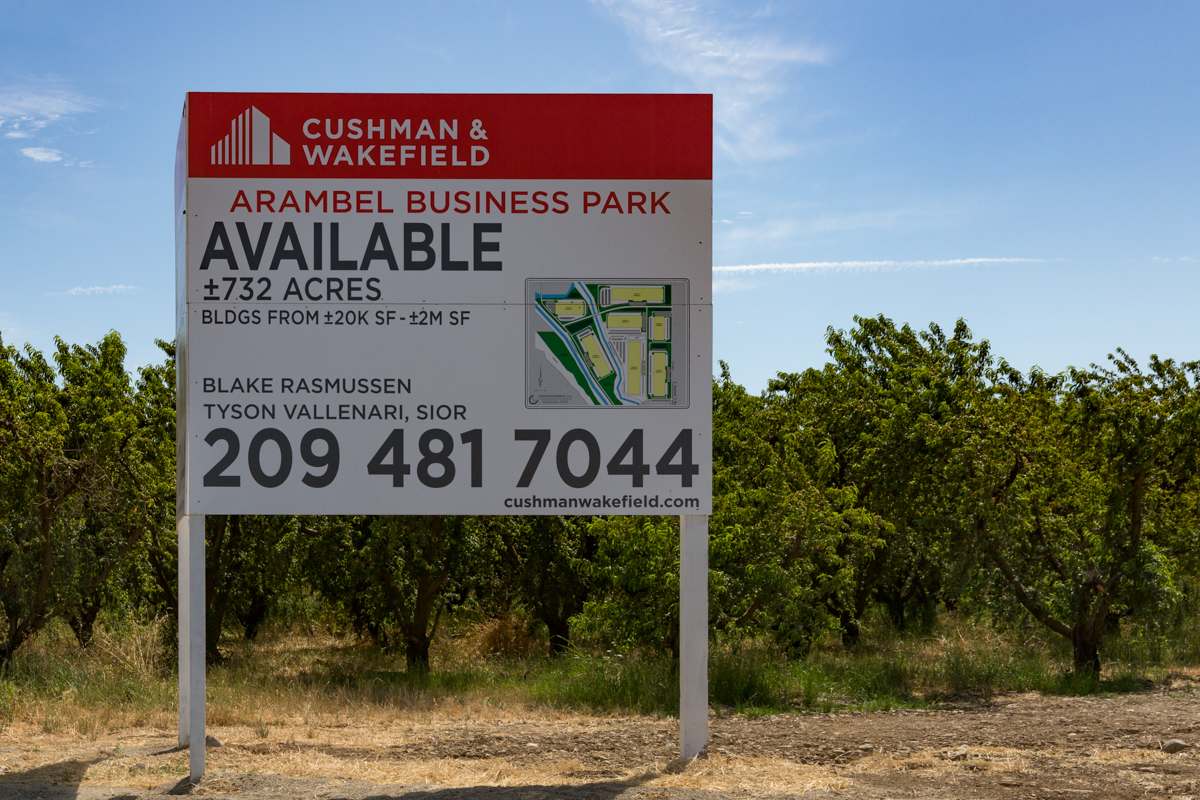
The first stop was to the Apricot Fiesta, right in the heart of Patterson. I learned that Patterson has an interesting origin story. Originally a Mexican land grant called Rancho La Puerta, President Abraham Lincoln patented a land grant of 13,340 acres that was purchased by New York rancher and businessman, John D. Patterson in 1864. Those wanting to acquire ranches in the present day may want to check out the ranches for sale online. Patterson increased the land area significantly during his lifetime. After his death, Patterson’s heir Thomas W. Patterson laid out the future city in a pattern inspired by the design of Washington D.C., featuring a small downtown circle from which streets radiate outward like the spokes of a wheel. The surrounding land was divided into small ranches and the City of Patterson incorporated in 1919.
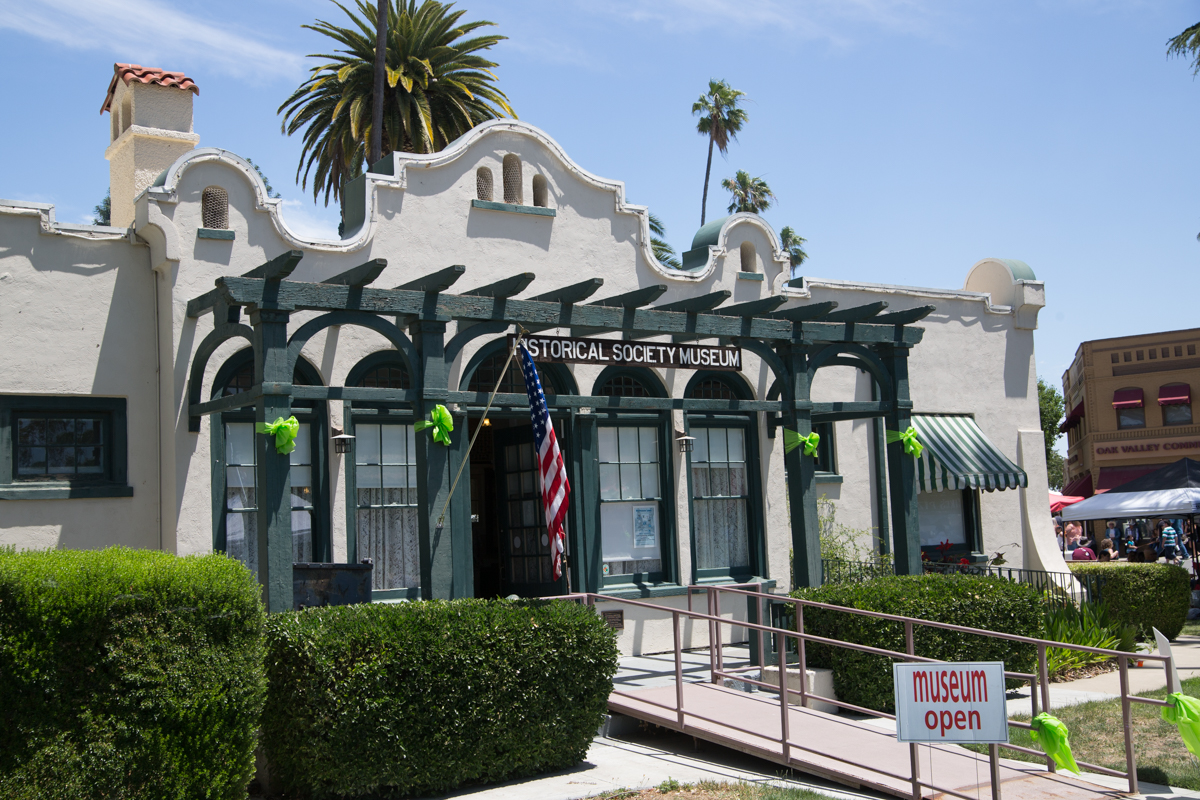
Today, the Historical Society Museum occupies the original “Center Building” and the Apricot Fiesta’s music, food and amusements spread in all directions on the surrounding streets for three days. Apricots, the City’s famous crop, are featured around the inner circle. Parades, pie eating contests and the coronation of Princesses and a Little Miss and Mister Apricot make for a unique twist on a very American festival.
The information booth, staffed with the Apricot Royalty (Princesses and runners up), had lots of free pamphlets about apricot nutrition, recipes and, of course, t-shirts for sale. Among the apricot purveyors was Bogdanich’s SunBlest Apricot Orchards. The Bogdanich family began farming Apricots in the Santa Clara Valley and eventually migrated to Patterson. Today, they grow many varieties of apricots on 20 acres.
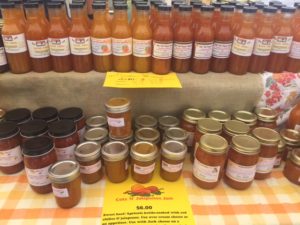
Caroline Bogdanich and her son Michael were handling a bustling business and we tried nearly everything: from two kinds of fresh apricots (Gold Bar and Patterson), reddish and very moist dried apricots, a delicious apricot-filled pastry, apricot jam, and other apricot-enhanced preserves like pepper jelly, pepper sauce and salsa.
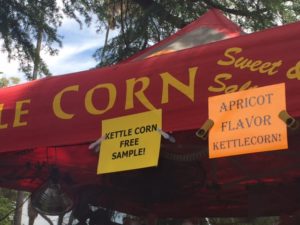
We got talking about the various apricot varieties and opinions on flavor. Caroline said that she loves Blenheims (this is gospel among Apricot lovers) but prefers the relatively new “Ruby Royal” variety even more. I had heard the same thing at my Farmers Market the week before and was intrigued to try them this year!
There were many more apricot products to taste or buy at other stops: Apricot kettle corn, the Boy Scout’s Apricot ice cream, Apricot wine, Apricot sangria, and Apricot/pepper roasted almonds. After all that, we skipped lunch and headed north out of town to visit George Bonacich at his ranch.
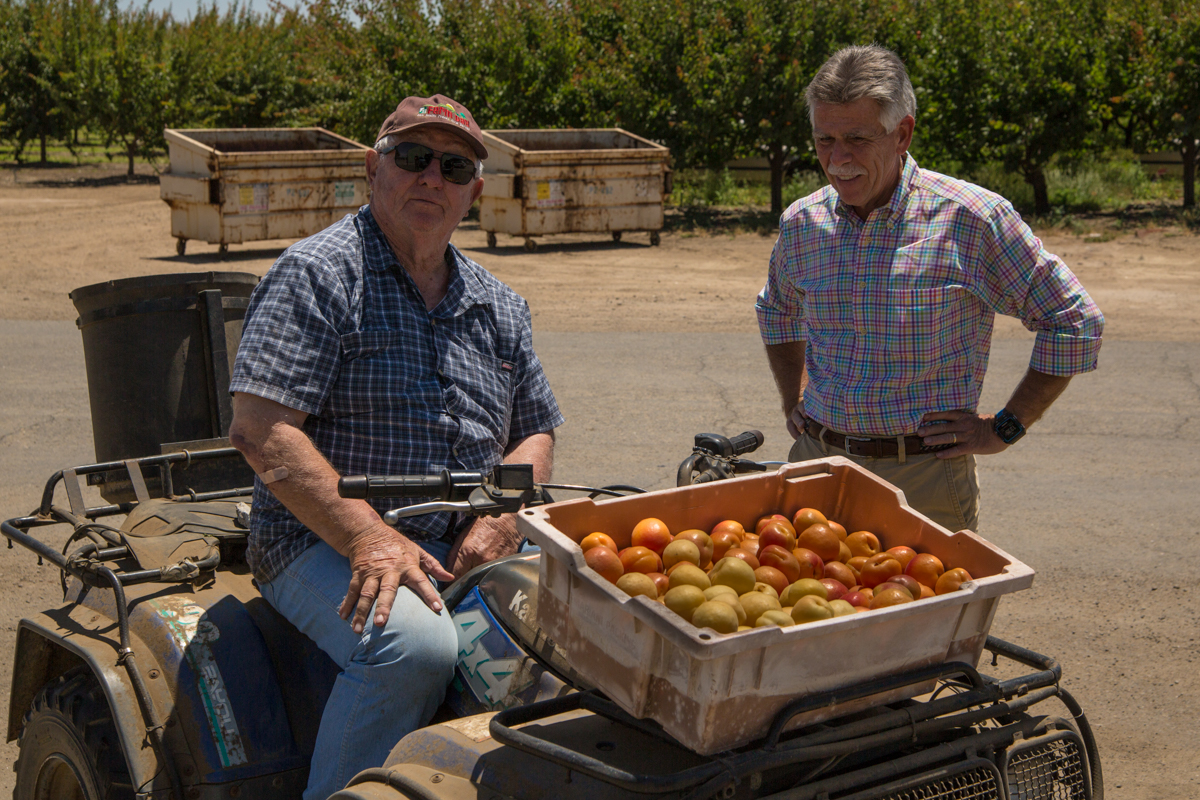
George Bonacich‘s grandparents emigrated from Croatia in the early 1900s, settling in Cupertino. His parents met there at social events and established their own orchard. George grew up among an extended family who farmed both Apricots and Cherries on over 100 acres. After studying Pomology at UC Davis, George operated a French Prune orchard in Healdsburg. Later, he returned to Hollister, just south of Santa Clara Valley, where he grew apricots. In 1969, he and his father decided to invest in the 160-acre Patterson ranch, given the increasing cost of land in the Santa Clara Valley, driven up by the pressure of urban development. While he lives in Gilroy, George, a youngster at 87 years, continues to operate this ranch with the partnership of his daughter and son-in-law. He is regarded as an innovator who has helped to develop many new varieties of apricots.
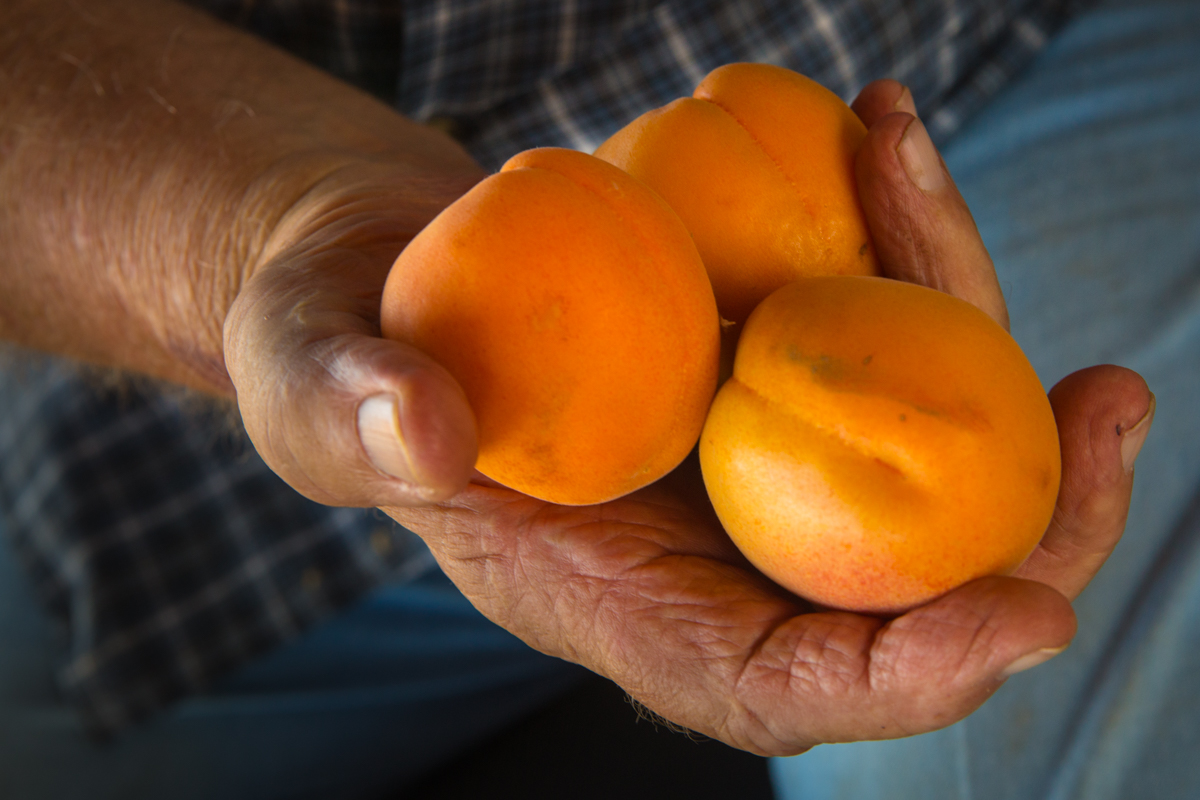
Initially, George’s Patterson ranch was entirely planted with the Tilton variety. At that time, Tilton Apricots were the leading variety in the Central Valley because they were well suited for commercial processing (freezing, drying and canning), although not as flavorful as the Royal Blenheim, which was the primary apricot grown in the Santa Clara Valley. The Patterson apricot emerged after the Tilton and steadily gained favor in the region for its good size, consistent color and firm texture. Pattersons are primarily used in canning, although some make it to the fresh apricot market. Today, the varieties most commonly grown in the region are the Patterson, Tilton and Apache.
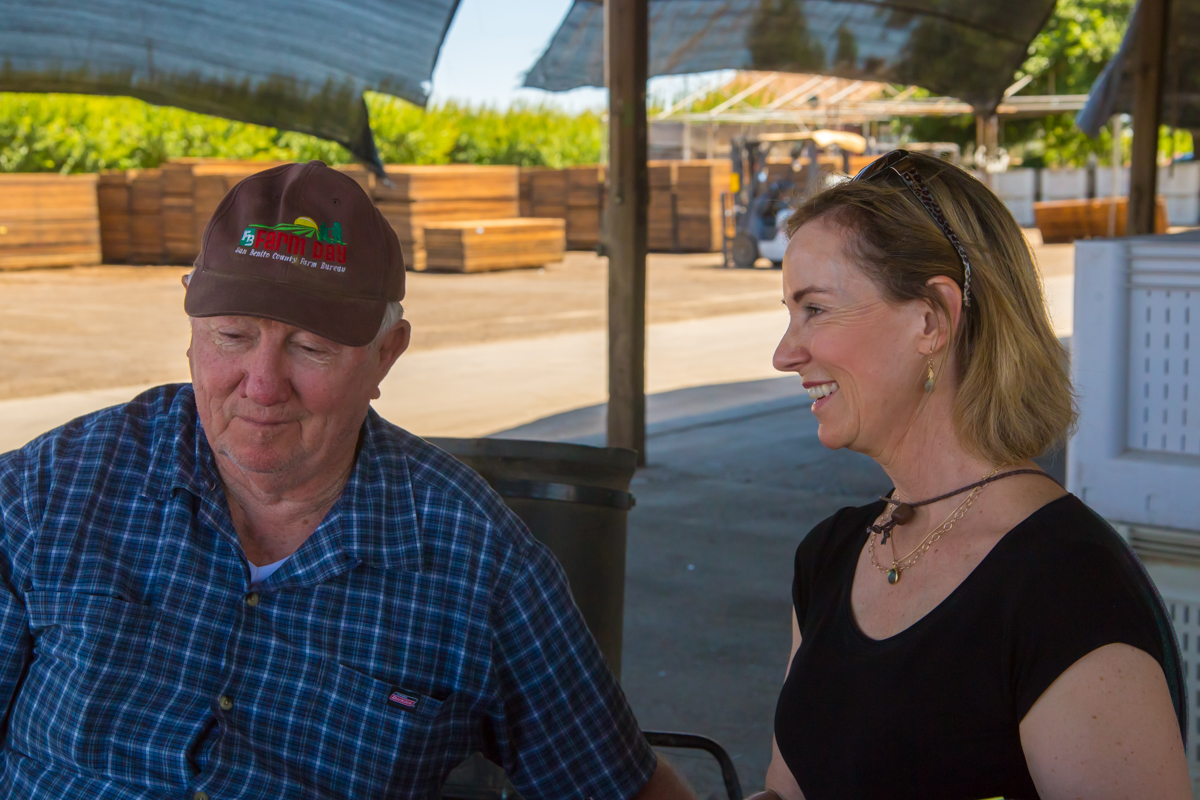
In his career as an orchardist, George has tested over 100 varieties of apricots. I know from tasting the Bonny Royal Apricot he developed that George is committed to creating and growing apricots with excellent flavor as well as the other important characteristics (color, texture and firmness) essential to marketing this delicate fruit. Among his favorites are the fairly new Ruby Royal, Tom Cot, Gold Bar, Bonny Cot, Sandy Cot, among other new varieties still in the experimental stage. George no longer grows the Tilton or Patterson Apricots, focusing instead on these newer and emerging varieties.
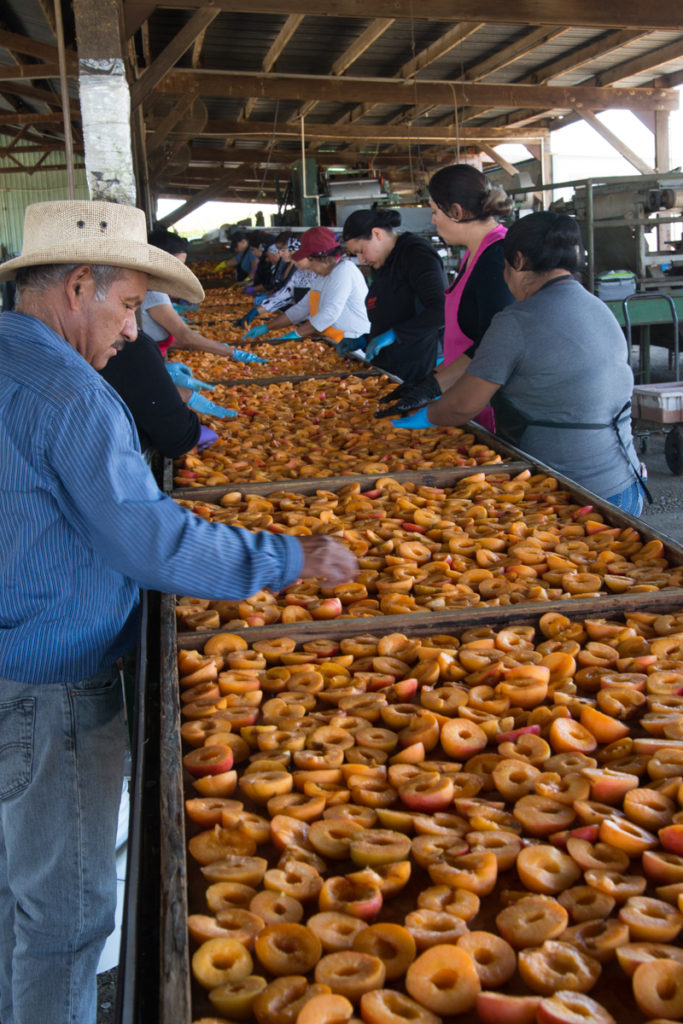
George manages a very large operation on 160 acres and is the 4th largest apricot producer in California (considering that 95% of the apricots produced in the United States originate in California, his operation is 4th largest in America). At this scale, the need for labor-intensive hand picking of the delicate fruit has to be balanced with machine cutting in order to manage cost and efficiency with this fragile product. At smaller orchards, all of this work is done by hand. During the peak of the season, up to 40 tons of apricots are processed (washed, machine cut and set out to dry) in a day. About half of the crop is sold fresh, much of it distributed through Safeway and Costco, and the rest is dried. George produces both sulfered and unsulfered dried apricots, primarily using the Ruby Royal and Bonny Royal varieties that have great color, flavor and moistness to produce a top quality dried fruit.

[recipe print=”true”]
Apricot Sangria
This recipe was inspired by the tasty Sangria we enjoyed at the Apricot Fiesta, prepared by Stewart and Jasper Orchards. It was a refreshing summer drink as we strolled around the fair in the hot sun! They suggest freezing the fresh apricot slices before mixing the drink. Be sure to chill the Sangria well before serving; the flavor will improve the longer it sits, for up to two days.
| Yield: Makes 2 quarts | Prep Time: 30 minutes |
|
Ingredients:
|
Directions:
|
[/recipe]


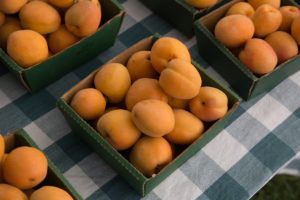
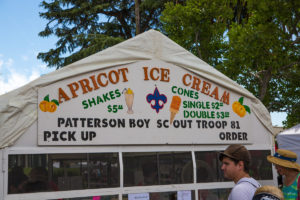
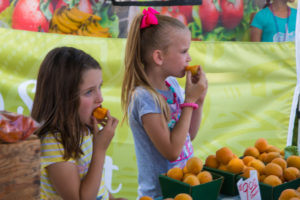
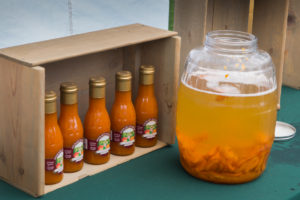
Great work on this one, it’s the best yet!
Amazing piece! Thanks for all the details and background. Now Patterson Apricot Fiesta is on my bucket list…
Another marvelous blog post, Lisa! Great information, wonderful information and special interviews and anecdotes. I look forward to your next one!
Great read Lisa and just in time for the farmers market season! I’m always looking for a good jam and brandy at the local markets in Santa Cruz or at least a recipe!
Thanks Jim! I have recipes for making both jam and brandy on the blog post “Now What Do I Do With All These Apricots”. Hope that helps!
When my folks moved to Saratoga from Missouri, via Stockton and San Jose, in 1954, the home they bought was the only one built in the Gardiner Park neighborhood (incidentally, the price was just a little over $9,000 – I still have the receipts). The site must have been a former apricot orchard as there were three well-established apricot trees in the back yard. Those trees lived until about the late 1970’s when they finally stopped bearing, but until then my mom canned, froze, and dried them annually, what we could not eat fresh in some way. Apricots and other stone fruit were our area’s true wealth, imho!
Thanks Edward for your childhood memories that are linked to apricots. I have a special connection to that neighborhood and park, which is a family namesake, and home to several of my classmates.
Lisa, thank you for your great publication. I know it takes much effort and time. Your effort is well worth it, and it means a lot to us who read it. Plus you are a good writer, my college friend! The Cushman & Wakefield sign tells a sad story of the small value our communities place on farmland. The same is true everywhere, it seems, where prime agricultural land is held for farming until “more valuable” development opportunities arise. In Austin the same is true, but there is a growing sense of the real value of such land for farming and local food and the value to all of us in preserving farmland in our midst. Austin Farmshare is one of the local groups that brings us together here in Central Texas for that purpose. May those apricot trees grow in your valley forever.
Thank you Steve for your support and insightful comments about the need to preserve agriculture in the midst of urban areas! It is essential to the health and wellbeing of our urban areas to have locally produced food and when nature gives you extraordinary gifts like the Santa Clara Valley, with its rich topsoil and benign climate; all the more reason to value that resource. Thanks for sharing about Austin Farmshare!
Lisa, this blog is a powerful combination of photos, history, graphs, and your personal opinion. It was a pleasure to read.
Another informative and inspiring article, Lisa. I’ll look for some of the new varieties at Berkeley Bowl. The fresh cots are just coming in…seems later than usual this year.
Very gratifying to read about George and his roots in Croatia. His family comes from an amazing part of the world.The street markets are jammed (so to speak) with dried orange, lemon, cots, figs and more. There are ancient threshing mills and an abundance of olives too. As if that’s not enough, Croatia boasts some of the most beautiful isles and craggy coastlines I’ve ever seen. Apricot field trip?
Enjoyed your story Lisa. I went to high school with George’s daughter Linda and her husband Hugh Vanderford. After moving to Patterson a few years ago, I ran into Hugh at one of their orchards. I knew he had joined the family business shortly after high school, but had no idea he was still doing it.
Thanks for your interest Larry! It’s nice to hear about your close connection to apricots and the Bonacich family.
Love love, your words and special memories re apricots. I have a new found love (and respect) for apricots and those who grow them. . thanks Lisa for teaching me..
Thanks so much for your kind comment, Cindy!
Thank you for sharing this wonderful history. So happy I grew up in ‘The Valley of Heart’s Delight’. My first ‘job’ at age 12 was cutting ‘cots for the drying trays. The whole valley was magic with fruit trees everywhere in the ’50’s/’60’s and summers full of wonderful fruit. Sad that other places in CA are loosing their orchards now also.
Thank you Linda for sharing memories and your heartfelt comment!
Very informative. The tract where our house was built in 1961 was surrounded by apricot trees. I have not tasted any apricots as delicious and sweet as those from our tree. Do not know what kind they are and wish I did.
The orchards were between Story Road on the south side and East Hills Drive on the north side. By any chance would you happen to know where could I find out what kind of apricots was grown in this area.? Would love to try to get a sapling from the same family. Have tried to get a sapling to grow from ours and have been unsuccessful.
Thank you in advance for your time and assistance.
Lydia
Thank you for your comments Lydia! There are many people who could help you with sourcing and determining what apricots were grown in your neighborhood. You might start with Andy Mariani at Andy’s Orchards in Morgan Hill. You could call or visit there; Andy is an excellent resource.
A whole blog on apricots. Yes, well they deserve it and your post is very informative and well rendered.
Thanks so much Jeannette!
Yes, we used to live in the apricot capital of the world. But back then, as Lisa notes, we never claimed the ‘crown’, although I think we still have the best apricots ever (thanks to Novakovich Orchards). Patterson farmer George Bonacich experiments with new varieties, cause the Blenheim can’t handle the Central Valley heat.
Thanks for your comment. Take heart in the promise of the Bonny Royal and Ruby Royal among other new varieties and request them at your grocer/farmers market!
If it weren’t for the Novakovich farms we would never know what REAL fruit is any longer. Love their Blenheim’s! We are just eating the last of their cherries. I drove from HMB to purchase them.
Great entry in your blog Lisa. I like the way you honor farming, family tradition and the love of quality fruit.
I am glad you shed light on the consequences of development. Lastly, I have to say I think the Apricot Sangria sounds awesome!
Thank you Kristi! I hope you will taste and document apricots in Europe on your travels!
Awesome blog! Thanks so much for posting. Very informative and attractive. just remembered that one of my favorite things from childhood was apricot nectar! I haven’t had it for years.
Thanks so much Diana! In Europe, I discovered that apricot nectar (juice) is very popular and there are many brands. I wish it were more common in markets here!